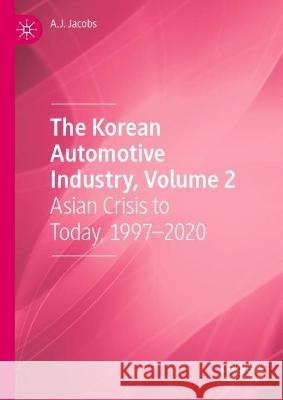The Korean Automotive Industry, Volume 2 » książka
topmenu
The Korean Automotive Industry, Volume 2
ISBN-13: 9783031364525 / Angielski / Twarda / 2023
The Korean Automotive Industry, Volume 2
ISBN-13: 9783031364525 / Angielski / Twarda / 2023
cena 537,24 zł
(netto: 511,66 VAT: 5%)
Najniższa cena z 30 dni: 537,24 zł
(netto: 511,66 VAT: 5%)
Najniższa cena z 30 dni: 537,24 zł
Termin realizacji zamówienia:
ok. 20 dni roboczych
dostawa w 2025
ok. 20 dni roboczych
dostawa w 2025
Darmowa dostawa!
This volume chronicles the maturation of the South Korean auto industry and its native automakers, from the 1997 Asian Crisis to 2019. After examining the context for domestic vehicle production in South Korea, the author presents multiple case studies for all five Korean automakers: General Motors Korea/Daewoo Motors, Kia, Hyundai, Ssangyong and Renault Samsung. This includes coverage of Hyundai-Kia’s foreign plants in North America, Europe, India, China, and Emerging Asia. The book closes by assessing the five-to-ten-year future outlooks for Korean automakers at home and abroad. This important work will prove informative to scholars of business, management, automotive history, international development, Asian studies, and public administration.











